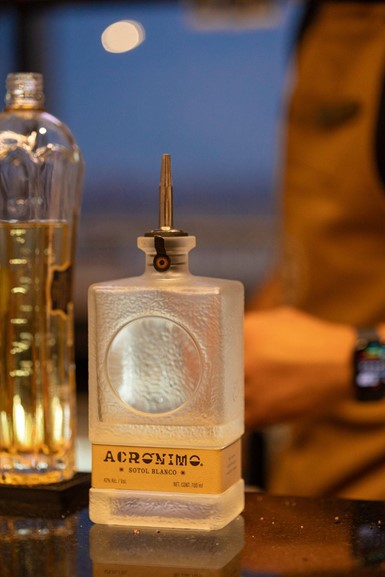Sotol and Sustainability: How This Spirit Respects the Wild

A wild plant with centuries of tradition grows silently in the high plains and vast deserts of Northern Mexico. Indigenous people have long used this desert succulent, known as sotol, as a food source and the base for a special earthy spirit.
However, as interest in craft and artisanal liquors continues to rise globally, sotol stands out for its sustainability as well as its flavor.
Sotol is distinct from other spirits for reasons other than its flavor or history. It’s the way nature was considered when creating this beverage. Every stage of the sotol production process, from gathering wild plants to slow, minimal-intervention distillation, has a backstory.
Additionally, the story is based on harmony with the land, with the people, and with tradition. In this blog post, we will take a look at sotol’s sustainability.
Table of Contents
Sotol's Sustainability and Wild Beginnings
The Dasylirion plant, a native of the Chihuahuan desert and a cousin of agave, is the source of sotol. Dasylirion grows wild and can take 10 to 15 years to mature, unlike agave used to make tequila or mezcal. It requires little to no assistance from humans and grows well in rocky, dry soil.
The sustainable advantage of sotol is greatly influenced by this natural growth cycle. These plants are not grown in tidy rows by farmers or distillers. Rather, they gather them in small, regulated quantities straight from the wild.
This lessens the need for chemical fertilizers, artificial growth accelerators, and extensive irrigation. Humans only direct nature; it does the work.
A Sustainable Harvest: Avoiding Overuse of the Land
Let’s face it, not all alcoholic beverages are produced with sustainability in mind. Respect for the land, however, is ingrained in the sotol process. To understand sotol’s sustainability, it is important to understand its harvesting process.
Producers of sotol, particularly in regions such as Durango, Coahuila, and Chihuahua, use traditional harvesting techniques to maintain healthy plant populations. Younger plants are left to flourish while only mature plants are taken.
The natural landscape won’t be bare thanks to this type of rotational harvesting. Local communities also play a significant role in this process. For many of them, maintaining a legacy is more important than simply enjoying the beverage.
Thus, there is a genuine sense of obligation to the desert and its resources. This process demonstrates sotol’s sustainability.
The Reasons Sotol Is a Green Option
- Plants collected in the wild: No need for irrigation or expansive plantations.
- Low energy production: Makes use of conventional tools and renewable fuels.
- Supports biodiversity: Harvesting from the wild encourages environmental balance.
- Culture is preserved by empowering local and indigenous producers with eco-values.
These are some of the points that prove Sotols sustainability.
Sustainability Issues in the Production of Sotol
Alright, so everything isn’t flawless. The risk of overharvesting is increasing as sotol becomes more and more popular. More companies want to participate, and not all of them use conventional, environmentally friendly practices.
Some even advocate for the plant to be farmed, which somewhat negates the unique wild quality of the plant.
There are legal matters as well. Tequila and mezcal are more well-known worldwide than sotol. Because of this, producers find it more difficult to legally defend traditional practices, which allows large brands to take shortcuts. This will give a great insight into sotol’s sustainability.
Therefore, maintaining sotol wild—and sustainable—requires responsible production, education, and even policy support.

Things That Must Be Improved
- Unambiguous rules: To prevent overuse.
- Systems of certification: Such as sustainable or organic labels for real sotol.
- Consumer awareness: People ought to be aware of the products they are purchasing.
Purposeful Drinking: What You Can Do
Purchasing a bottle of sotol is more than just purchasing alcoholic beverages; it’s also contributing to a cause. Choose companies that respect the desert ecosystem, use traditional methods, and collaborate directly with local farmers.
Seek out transparency. On their websites, many craft producers provide information about their community service, production methods, and harvest cycles. That’s a fantastic starting point. Additionally, you might want to avoid the gaudy commercial brands that appeared last week.
FAQs
Q1: What ingredients go into making sotol?
The Dasylirion plant, a desert succulent indigenous to Northern Mexico, is used to make sotol.
Q2: Is sotol comparable to mezcal or tequila?
Although it uses a different plant and tastes more earthy and herbal, it is somewhat similar.
Q3: Is sotol safe for the environment?
Yes, particularly when produced and harvested in a traditional manner. It makes use of low-energy production methods and wild plants.
Q4: Is it possible to grow sotol?
Yes, in theory, but it no longer has the wild-grown character. Wild harvesting is preferred by the majority of traditional producers.
Q5: How can I locate brands of sustainable sotol?
Seek out companies that use eco-friendly methods, source from nearby communities, and are open and honest about their production.
Conclusion
Sotol’s sustainability is ironclad. Wild, Real, and Rooted Sotol is much more than just a fad. It reflects a location, a people, and a custom that is closely related to the natural world.
This wild spirit can continue to provide a rich flavor and a smaller environmental impact as long as sustainability remains at its core.
Consider the ancient plants, the desert winds, and the hands that brought everything together the next time you take a sip. Because you drink with the wild when you take sotol.
